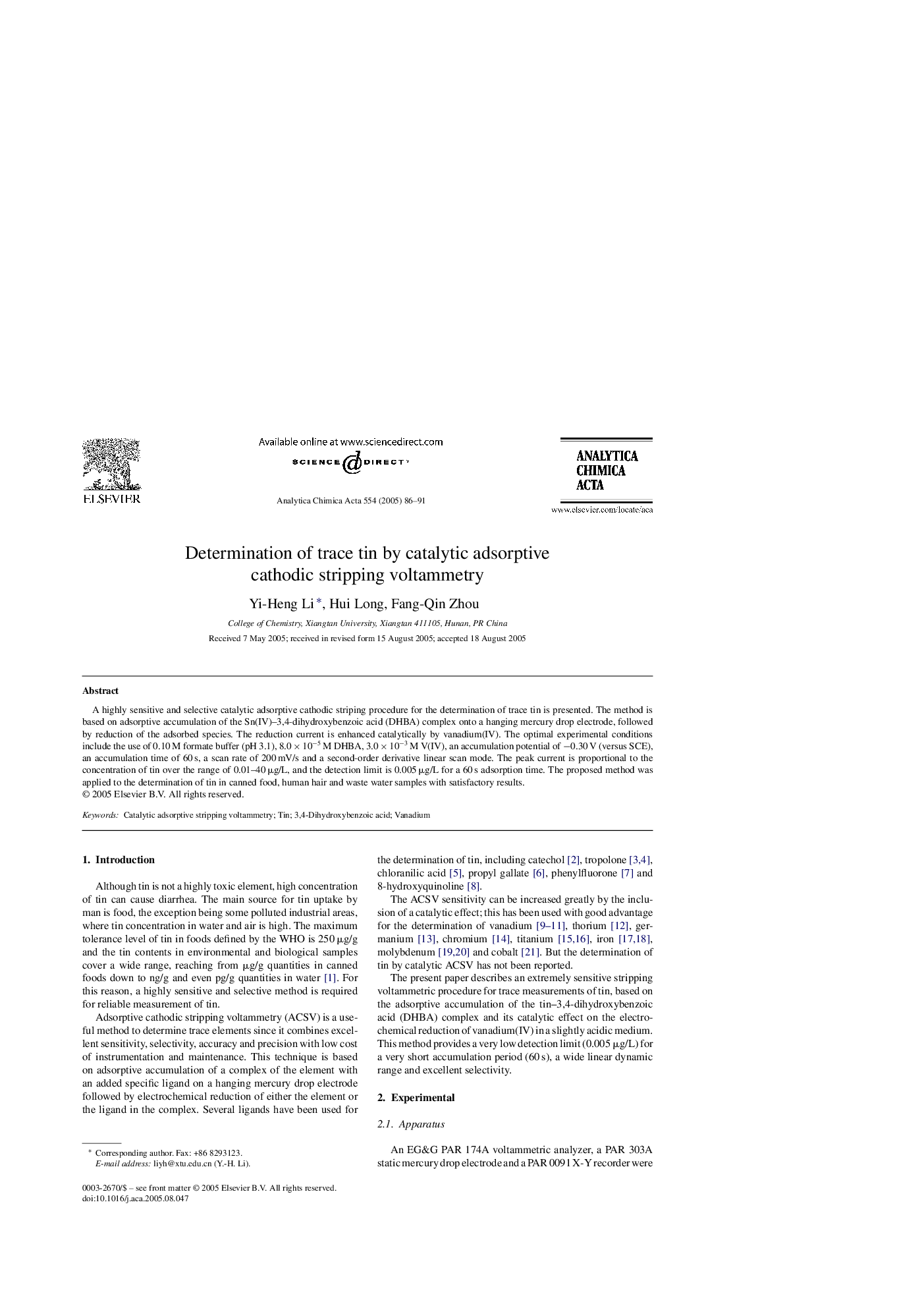| Article ID | Journal | Published Year | Pages | File Type |
|---|---|---|---|---|
| 9743293 | Analytica Chimica Acta | 2005 | 6 Pages |
Abstract
A highly sensitive and selective catalytic adsorptive cathodic striping procedure for the determination of trace tin is presented. The method is based on adsorptive accumulation of the Sn(IV)-3,4-dihydroxybenzoic acid (DHBA) complex onto a hanging mercury drop electrode, followed by reduction of the adsorbed species. The reduction current is enhanced catalytically by vanadium(IV). The optimal experimental conditions include the use of 0.10 M formate buffer (pH 3.1), 8.0 Ã 10â5 M DHBA, 3.0 Ã 10â3 M V(IV), an accumulation potential of â0.30 V (versus SCE), an accumulation time of 60 s, a scan rate of 200 mV/s and a second-order derivative linear scan mode. The peak current is proportional to the concentration of tin over the range of 0.01-40 μg/L, and the detection limit is 0.005 μg/L for a 60 s adsorption time. The proposed method was applied to the determination of tin in canned food, human hair and waste water samples with satisfactory results.
Related Topics
Physical Sciences and Engineering
Chemistry
Analytical Chemistry
Authors
Yi-Heng Li, Hui Long, Fang-Qin Zhou,
